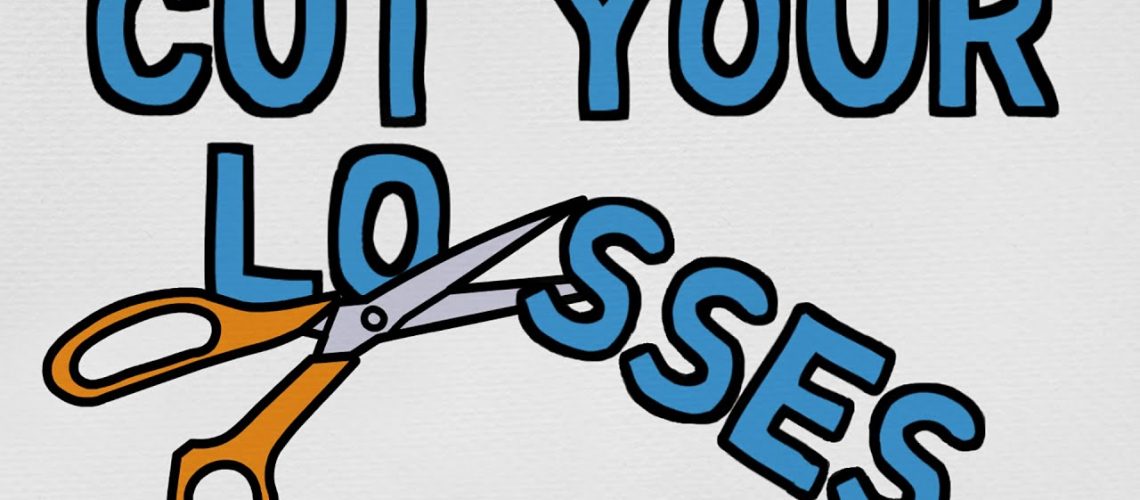People demonstrate "a greater tendency to continue an endeavor once an investment in money, effort, or time has been made." So how should you know when to cut your losses?
Video by Better Than Yesterday
Key Takeaways
Example 1:
You find a trip to Rome, a city you want to visit, but it’s not something you’re too excited about. The travel package includes a plane ticket and a stay at a hotel for a total of $2000.
This package is non refundable, but you didn’t find anything better, so you decide to book the trip.
Then the next day you do some more searching and you find another potential trip. This time it’s to Paris, your favorite city.
The travel package comes with a plane ticket and it includes a stay at a much more luxurious hotel. For the cherry on top, the trip is on a discount and it costs $1000.
Again, the ticket is non-refundable. But since you’ll be taking two separate breaks this summer, you decide to book this trip as well.
However later that day you realized that you’ve made a small mistake. You accidentally booked the trip to Paris, for the same week as your trip to Rome.
You start weighing your options. If you go to Rome, you’d only lose out on $1000 you paid for Paris. But if you go to Paris, you’d have to swallow a loss of $2000 you paid for Rome.
You know that in Rome you’d have a decent time, but in Paris you’d have an amazing time. So which do you pick?
The better answer would be to go to Paris.
If you pick Rome, it might seem like you’re only losing $1000, instead of $2000. But that’s just an illusion. You’ve spent $3000 for either trip and you can’t get this money back. Your loss is actually equal.
Sunk Cost Fallacy
What was just described is what psychologists and economists call: the sunk cost fallacy. It’s one of the more common cognitive biases that clouds our judgement.
Essentially the sunk cost fallacy is this: Making a decision based on your past losses, instead on potential future returns.
Example 2:
However, because you feel like you’re supposed to get your money’s worth, you decide to watch the rest of the 2 hour movie.
This decision is based on your loss of $10. But it isn’t an optimal one. A more logical thing to do, would have been to get up and leave after you had realized this movie wasn’t what you wanted to watch.
Wouldn’t you be better off, had you only wasted $10 and 15 minutes of your time, instead of wasting $10 and 2 hours?
Had you left early, you would’ve essentially gained 2 hours of extra time. And that would be thinking based on future returns.
Those $10 you spent were gone or “sunk” either way. You couldn’t get them back, whether you watched the rest of the movie or not.
And this doesn’t apply just to money, but to time and effort as well.
For instance, relationships are a prime example of this bias.
The more time someone has spent with another person, the harder it is for them to break up.
In some cases, even if the relationship becomes completely dysfunctional or even abusive, they will continue to stay in it, when really, it would be healthier if they parted ways.
Now, I’m not saying that couples shouldn’t attempt to fix their problems. It’s worth at least trying, but if they stay together just because they’ve invested so much time, money or effort into the relationship, they’re only going to be more miserable down the line.
The same goes for people’s education and careers.
Let’s take this lawyer for example. He went through 7 years of school to get his degree. But 3 years into his profession, he realized this job isn’t for him. And that he would be happier somewhere else.
He wants to change his occupation, but now he’s faced with sunk costs. He basically spent the last 10 years of his life working on this career. If he were to quit, it would basically mean that he wasted a portion of his life. But those years were spent and they’re gone, no matter what.
Is it worth being miserable for the next 40, just because of the past 10? Of course not. That’s a bad bargain. But again, sunk costs often compel people to stay in their miserable jobs.
Now the sunk cost fallacy doesn’t apply just to individuals, but to nations as well.
When countries lose hundreds of soldiers in a war, they commit even more resources towards it. They believe that the sacrifices made by the previous soldiers shouldn’t be in vain.
The reason why we fall for sunk costs so easily, is because we don’t treat gains and losses equally.
You’d actually feel worse than before. You would process this interaction as a loss of $100, even if on paper, you didn’t actually make or lose any money in the process.
I would have to give you back the $100, just for you to feel like when you had $0. And to make you happy again, like when you received the first 100, I’d have to give you another $100. So $200 in total. Crazy right?
We feel twice the emotional reaction when we encounter a loss, compared to when we gain the same amount. This is why we need double the gain, just to offset the loss.
And because we’re so reluctant to accept losses, we’re more willing to double down and start pouring more money, time and effort towards whatever we would “lose”.
Of course this often results in more loss, making you more likely to invest even more resources into a lost cause. This creates a perpetual negative loop, where we’re unwilling to quit because of our previous investments.
The message of this video isn’t to quit or to give up on everything. Perseverance is important and there could be plenty of good reasons to continue pursing something.
I just want you to be aware of the sunk costs, and to ignore them when making a decision.
Remember: what’s spent is spent. If you continue to pour more resources into a failing project, you’re just digging a bigger hole for yourself. Making it even harder to quit.
So learn to cut your past losses. Instead, look for potential future returns.

